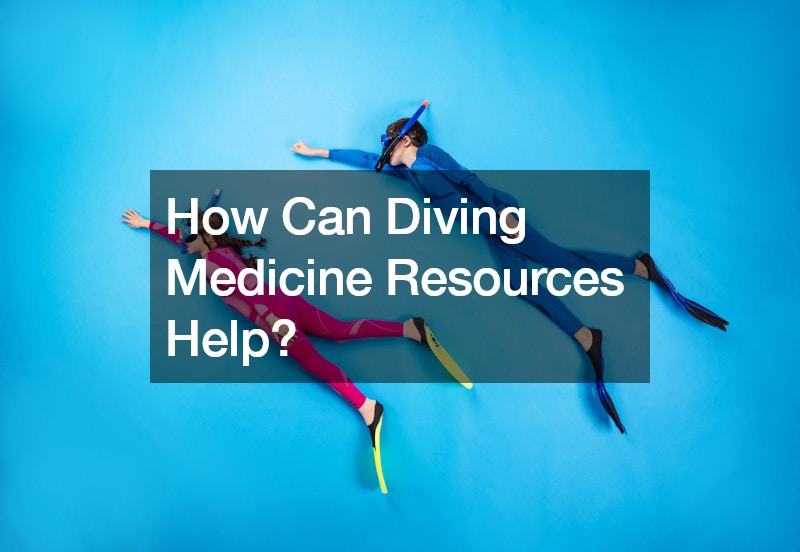
Diving medicine, also known as hyperbaric medicine, is a critical field that deals with the physiological and medical conditions associated with underwater diving. With the increasing popularity of recreational scuba diving and the ongoing needs in professional diving operations, diving medicine has become an essential resource for ensuring safety and health in underwater activities. Here’s how diving medicine resources can help divers across various aspects:
1. Prevention of Diving-Related Illnesses
One of the primary roles of diving medicine is to prevent illnesses related to diving.
The most well-known condition is decompression sickness (DCS), often referred to as “the bends,” which can occur when divers ascend too quickly and nitrogen bubbles form in their bloodstream. Diving medicine resources provide guidelines on safe ascent rates, proper breathing gas mixtures, and the use of decompression stops to minimize the risk of DCS.
Another significant concern is nitrogen narcosis, a condition that impairs a diver’s cognitive functions, similar to intoxication, at greater depths. Diving medicine offers insights into managing and mitigating this risk by recommending appropriate depth limits and gas mixtures such as trimix or heliox, which reduce nitrogen intake.
2. Education and Training
Diving medicine resources play a crucial role in the education and training of divers and diving professionals. This includes detailed training on how to recognize and handle various underwater emergencies, such as oxygen toxicity, hypothermia, and air embolism. Through certification courses, workshops, and continuing education, divers are equipped with the knowledge and skills necessary to handle potential underwater medical issues effectively.
Additionally, diving medicine specialists contribute to the training on the use of specialized equipment like rebreathers and enriched air nitrox, which require thorough understanding to use safely.
3. Fitness to Dive Assessments
Before engaging in diving activities, it’s crucial for divers to be assessed for their fitness to dive. Diving medicine doctors conduct comprehensive medical evaluations to ensure that individuals do not have pre-existing conditions that could pose risks while diving. Conditions such as lung disorders, heart issues, or even recent surgeries can significantly affect a diver’s safety underwater. These assessments help in making informed decisions about a diver’s readiness and can also guide them on how to manage chronic conditions while diving.
4. Emergency Response and Treatment
Diving medicine resources include protocols and infrastructure for emergency responses, such as hyperbaric oxygen therapy (HBOT). HBOT is an effective treatment for decompression sickness and other dive-related injuries. It involves placing the patient in a pressurized chamber to breathe 100% oxygen, which can help reduce the size of nitrogen bubbles in the bloodstream and promote faster healing of tissues damaged by gas emboli.
Emergency response also involves the training of dive professionals and coordination with local health services to ensure that divers receive timely and appropriate care in the event of an accident.
5. Research and Advancements
Ongoing research in diving medicine continues to advance our understanding of the human body’s response to the underwater environment. This research leads to better safety protocols, equipment, and treatment modalities. Current research areas include long-term health effects of diving, the impact of extreme depths and prolonged exposure, and the development of new breathing apparatuses that could extend safe diving limits.
6. Community and Environmental Awareness
Diving medicine isn’t just about individual health; it also encompasses environmental concerns. Understanding the impact of diving on fragile aquatic ecosystems and promoting responsible diving practices are part of the educational outreach conducted by diving medicine professionals. This includes advising divers on how to minimize damage to coral reefs and marine life, thus supporting conservation efforts.
.

